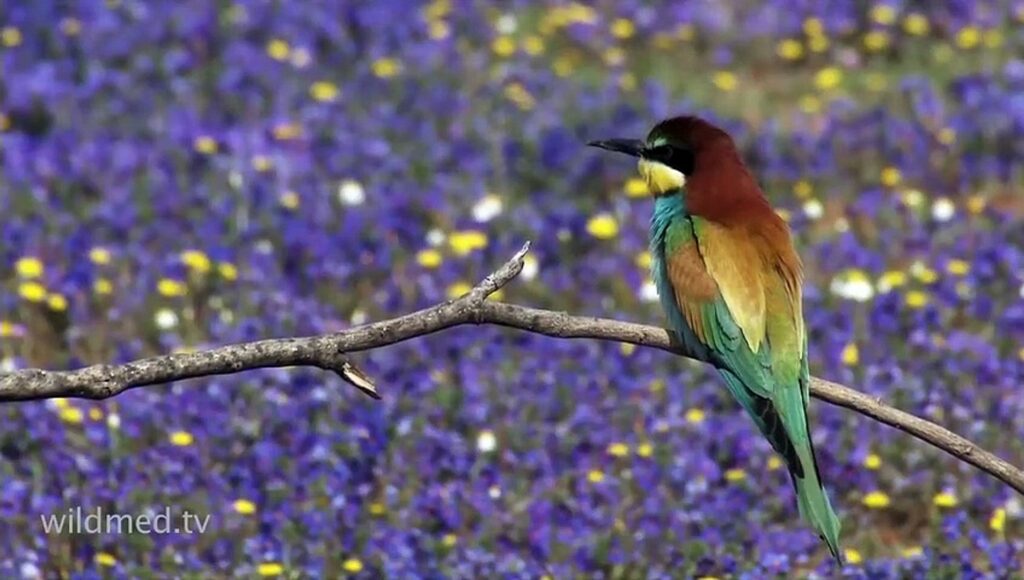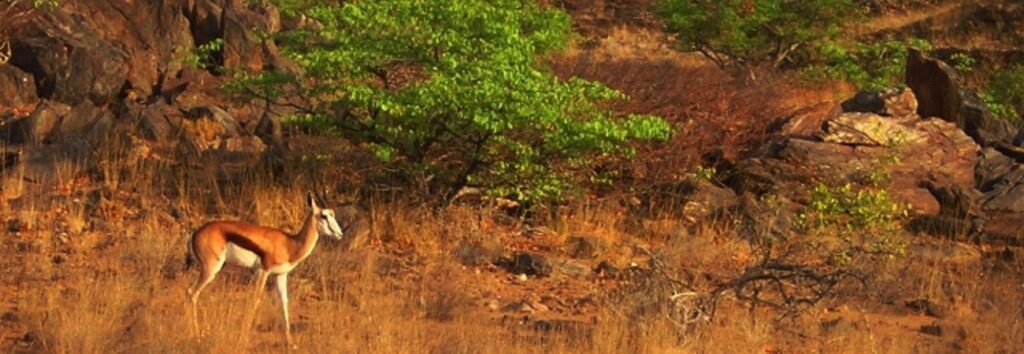Nature documentaries occupy a unique space in cinema – part spectacle, part scientific record, part urgent call to action. Some transcend the genre, offering profound insights into specific ecosystems and our impact upon them. Arturo Menor’s WildMed, el último bosque mediterráneo (2014) stands as a significant contribution to this field, turning its lens onto Spain’s Sierra Morena region. It’s an ambitious work aiming to capture “one of the most important wildlife refuges on the continent”. Originating in Spain, the film quickly garnered international attention, broadcast in over 100 countries and picked up by giants like National Geographic and Discovery Channel.
The film earned critical acclaim, particularly in its homeland, culminating in a prestigious Goya Award nomination for Best Documentary Film in 2015 , alongside numerous international festival accolades. This positions WildMed as a cinematic endeavor worth noting. Director Arturo Menor, leveraging his dual expertise as a biologist and filmmaker, crafts not just a visually stunning portrait but a compelling, scientifically grounded narrative about the beauty, fragility, and interconnectedness of this unique Mediterranean forest facing existential threats.
The Biologist’s Lens: Arturo Menor’s Vision for Sierra Morena
Central to WildMed‘s success is the unique qualification of its director. Arturo Menor Campillo is not merely a filmmaker; he is also a biologist, naturalist, screenwriter, and cameraman. His previous award-winning short films like “Ecología de la Muerte” (Ecology of Death) and “Amigas del Aire” (Friends of the Air) , and subsequent features including “Barbacana, la huella del lobo” (Barbacana, the Wolf’s Footprint) and “Iberia, naturaleza infinita” (Iberia, Infinite Nature) , demonstrate his enduring commitment to exploring the natural world through the camera’s eye.
Menor’s stated goal is to blend art and science, using cinema as a medium for artistic expression grounded in scientific rigor. This approach profoundly shapes WildMed. The film moves beyond simple animal observation; it structures its narrative around ecological concepts. Rather than following individual creatures aimlessly, Menor elevates the ecosystem itself into the protagonist, facing a conflict – the threat of “la seca” (oak decline) and damaging human impacts. This science-informed storytelling lends the film depth and authority.
The film carries an explicit conservation message. It is presented as a “call for attention” regarding the dangers threatening the Sierra Morena. The film argues that human intervention is causing harm and that restoring ecological balance is crucial. This conservation imperative is not a subtext but the narrative’s driving force.
Production was handled by Acajú Comunicación Ambiental, a company specializing in nature and environmental films. The independent nature of the production, marked by the use of crowdfunding via the Verkami platform to cover post-production costs , underscores the passion and resourcefulness behind the project. It’s a testament to how deep commitment to scientific accuracy and powerful storytelling can overcome budgetary constraints.

Sierra Morena Unveiled: Charting the Last Mediterranean Forest
WildMed transports viewers into the heart of the Sierra Morena, a vast and unique landscape the film portrays with reverence and detail. Described as the largest Mediterranean forest on the planet, spanning over a million hectares , the region is presented as a place of immense ecological importance within Europe. The film emphasizes its distinctiveness, noting its status as a privileged territory for wildlife and its cultural resonance as a “land of legends,” deeply connected to Spanish literature and the Romantic imagination.
The film’s narrative appears to follow a topographical and ecological logic, taking the viewer on a journey “from the peaks of its rugged and mountainous ranges to the bottom of the valleys where cool mountain streams flow”. This structure suggests a comprehensive ecological survey, showcasing the diverse habitats within the larger forest – from rocky heights to lush river valleys. This approach effectively positions the Sierra Morena itself as the film’s central character. It’s not merely a backdrop for animal stories; it’s a living, breathing entity whose health, complexity, and survival form the core narrative arc. The threats discussed in the film – particularly the devastating “la seca” and broader human impacts – are the conflicts faced by this ecosystem-protagonist.
The film highlights the region’s rich biodiversity, establishing it as a wildlife hotspot. This scene-setting lays the groundwork for introducing the key animal species that inhabit this forest and serve as the principal “actors” in the film’s unfolding ecological drama.
WildMed’s Cast: Encounters with Iconic Iberian Fauna
Instead of a traditional human cast, WildMed features a star-studded ensemble of Sierra Morena’s wildlife, treating key species almost as characters within the unfolding ecological drama. Menor uses these charismatic animals to draw the audience into the complex web of life and the urgent conservation challenges.
The Iberian Lynx (Lince Ibérico): Perhaps the most iconic resident, the fabled lynx takes center stage. The film likely showcases its secretive nature, exceptional hunting skills, and stunning spotted camouflage. Crucially, the film addresses the challenges the lynx faces, particularly the decline of its primary prey, rabbits, due to disease. This forces the lynx to expand its territory and adapt its behavior, such as hunting birds when necessary. The film even delves into the minute details of its ecology, showing how its droppings sustain other life, like the Trox dung beetles.
The Spanish Imperial Eagle (Águila Imperial Ibérica): A majestic predator of the skies, the heraldic imperial eagle shares the ecosystem with the lynx. The film likely contrasts its aerial perspective and hunting strategies with the lynx’s terrestrial existence, perhaps highlighting competition for shared resources like rabbits. Its presence adds another layer to the portrayal of the forest’s intricate food web.
The Iberian Wolf (Lobo Ibérico): The mythic wolf also features prominently. As an apex predator, its presence – or more significantly, its recent decline – has cascading effects throughout the ecosystem. One review mentions the film linking the forest’s health issues to deer overpopulation due to the absence of wolves , illustrating the critical role these predators play in maintaining ecological balance.
Other Notable Inhabitants: The film broadens its focus beyond the large predators to include creatures like the black vulture, various amphibians, and insects. The inclusion of these less glamorous but ecologically vital species underscores the interconnectedness of life in the forest, from the scavengers cleaning the landscape to the tiniest invertebrates involved in decomposition and nutrient cycling.
By exploring how Menor depicts the life cycles, behaviors, survival struggles, and interactions of these animals, WildMed effectively uses these wildlife “stars” as ambassadors for the entire ecosystem. Their individual stories become windows into the larger ecological processes and conservation concerns, making abstract concepts tangible and emotionally resonant for the audience.

Crafting the Wild: Technical Execution and Aesthetics
Arturo Menor’s dual role as director and cameraman profoundly shapes WildMed‘s visual fabric. Judging from available stills and reviews , the visual style is marked by a commitment to natural light and authenticity. While one reviewer noted variable image sharpness in long shots compared to strong close-ups – a possible reflection of independent production constraints – the overall aim appears to capture both intimate wildlife moments and the grandeur of the Sierra Morena landscapes. Though specific techniques aren’t detailed, the genre implies the use of patience, hides, possibly camera traps and high-speed cameras for certain actions, and potentially aerial shots to capture the eagle’s perspective. The visuals are crucial in conveying both the beauty and the fragility of the forest.
The sound design, crafted by renowned nature sound recordist Carlos de Hita , is another key element. Interestingly, the production faced challenges capturing clean ambient sound due to the intrusion of human noise – chainsaws, gunshots, vehicles. This necessitated recording sound separately and possibly utilizing third-party ambient sound libraries. The successful integration of these elements to create an immersive and believable soundscape is a testament to the sound team’s skill and ability to adapt to real-world difficulties. This overcoming of limitations, often seen in independent documentary filmmaking, adds another layer of appreciation for the craft behind the film.
The original score by José Javier Arnanz Ayuso complements the soundscape. The music likely serves to heighten emotion, build tension, and underscore the majesty of nature, working in tandem with the natural sounds and narration (reportedly provided by Jesús Olmedo ).
Editing, handled by Juan Luis Santos Martínez and Menor himself , plays a crucial role in shaping the narrative. It weaves together the various animal stories, landscape shots, and underlying ecological themes, pacing the film and ensuring the diverse elements cohere. The technical execution of WildMed, especially considering its independent status and production challenges, showcases dedication and skill in creating an impactful and immersive cinematic experience.
The Shadow of ‘La Seca’: An Ecosystem Under Pressure
A central theme and primary threat explored in WildMed is the phenomenon known as “la seca” – the progressive drying and death of the holm and cork oaks that form the backbone of the Mediterranean forest. The film presents this not as a minor nuisance but as an existential threat, warning that if current trends continue, this lush forest could become a desert within 150 years.
The film cleverly uses the visible decay of these iconic trees as a potent visual metaphor for the deeper, less visible ecological imbalance plaguing the Sierra Morena. It connects “la seca” to broader issues like the potential impact of deer overpopulation due to the absence of wolves and, implicitly, to larger factors like climate change and other anthropogenic pressures. The film argues that human actions are both the cause of the problem and the key to its solution, advocating for the restoration of ecological equilibrium and promoting the forest’s natural regeneration.
By framing “la seca” in this manner, Menor transforms a slow, complex ecological process into a tangible and alarming narrative element. The dying trees become a concrete, haunting image that embodies the fragility of the entire ecosystem. This lends the narrative urgency and underscores the immediacy of its conservation message, effectively turning an abstract ecological concept into a dramatic stake for the viewer.
Reception and Resonance: WildMed’s Journey
Despite its independent origins and reliance on crowdfunding , WildMed achieved significant critical acclaim and global reach, demonstrating the power of a well-crafted, scientifically informed conservation message.
The film garnered positive audience scores across platforms, with IMDb users rating it 7.4/10 and the Spanish platform Filmin giving it a 7.9/10. (Rotten Tomatoes and Letterboxd data are absent or non-applicable for this niche documentary).
Critically, the film was warmly received in Spain. Cadena SER praised its “fantastic photography” and ability to raise awareness about the disturbed ecological balance. SensaCine gave it a positive score (3.5/5 from media) and noted its warning about the risk of desertification. Coverage in outlets like El Confidencial and its use in educational settings further highlight its domestic significance.
The film’s international recognition was exceptional, establishing it as one of Spain’s most awarded nature films. The pinnacle was the 2015 Goya Award nomination for Best Documentary Film. Additionally, it swept numerous awards at international festivals, including:
- Best Feature Film Award at the Vaasa International Nature Film Festival (Finland).
- Grand Prix of the St. Petersburg International Film Festival “World of Knowledge” (Russia).
- Prismas Award for Best Science Outreach Film (Spain).
- Grand Prix of the International Biennial of Scientific Cinema in Ronda (Spain).
- Best Newcomer Director Award at the Japan Wildlife Film Festival.
The film’s success wasn’t confined to the festival circuit. Through distribution deals with National Geographic and Discovery Channel, WildMed reached a vast audience, screening in over 100 countries and viewed by an estimated 70 million people. This extensive reach undoubtedly played a significant role in raising awareness about the Sierra Morena and the urgent conservation issues it faces. WildMed‘s journey from a crowdfunded project to a globally recognized and widely distributed documentary is a powerful example of how passion, scientific integrity, and compelling storytelling can overcome production limitations to make a substantial impact.
Conclusion: An Urgent and Beautiful Testament
WildMed, el último bosque mediterráneo is far more than just another nature documentary. It stands as a vital, insightful, and beautifully filmed testament to a unique and fragile ecosystem on the brink. The film’s strength lies in its ability to seamlessly blend director Arturo Menor’s scientific perspective with captivating cinematic storytelling. The stunning depictions of the Sierra Morena’s wildlife and landscapes serve not just as a visual feast but as the backdrop for a compelling narrative about ecological interconnectedness and the looming threat of “la seca.”
The film excels at making complex environmental issues accessible and urgent, using charismatic animals like the Iberian lynx and Spanish imperial eagle as conduits into the intricate web of forest life. The technical craft, particularly impressive given the film’s independent status and production hurdles like sound recording challenges , further enhances its impact. While minor visual limitations in long shots may have been noted , they do not detract from the overall achievement.
Ultimately, WildMed is a powerful call to action, reminding us of nature’s delicate balance and our responsibility to preserve it. Its festival success and broad international reach underscore the universal resonance of its message. It is essential viewing for anyone interested in conservation, European wildlife, or the power of documentary filmmaking to illuminate critical environmental stories. It serves as a beautiful, and alarming, reminder of what stands to be lost if we fail to act.
Film Fact Sheet
| Feature | Detail |
|---|---|
| Title | WildMed, el último bosque mediterráneo |
| Director | Arturo Menor Campillo |
| Year | 2014 |
| Country | Spain |
| Genre | Nature Documentary |
| Production Company | Acajú Comunicación Ambiental |
| Runtime | Approx. 60-70 mins (Various sources cite 50 , 52 , 61 , 70 , or 93 mins. 60-70 mins seems most likely for festival/broadcast version.) |
| Key Wildlife Species | Iberian Lynx, Spanish Imperial Eagle, Iberian Wolf, Black Vulture, Insects (e.g., Trox beetles), Amphibians |
| Key Awards/Nominations | Goya Award Nominee (Best Documentary) ; Winner at festivals in Vaasa (Finland), St. Petersburg (Russia), Ronda Biennial of Scientific Cinema (Spain), Prismas Award (Spain), Japan Wildlife Film Festival |
| Key Ratings | IMDb: 7.4/10 , Filmin: 7.9/10 |

